-
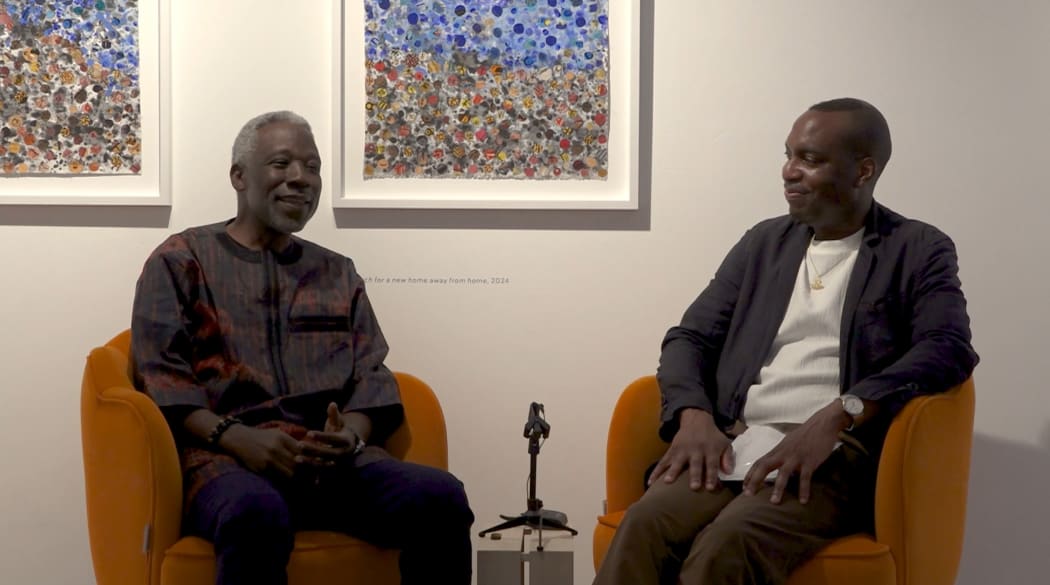 Professor Jerry Buhari (left) and Akin Oladimeji (right) © Leah Gordon
Professor Jerry Buhari (left) and Akin Oladimeji (right) © Leah GordonIn Conversation: Professor Jerry Buhari and Akin Oladimeji
Jerry Buhari: ‘Jápa’ // May 8 - June 28Professor Jerry Buhari in conversation with Akin Oladimeji for Buhari's solo exhibition Jápa at Ed Cross on 20th May, 2025. Watch the full video here. -
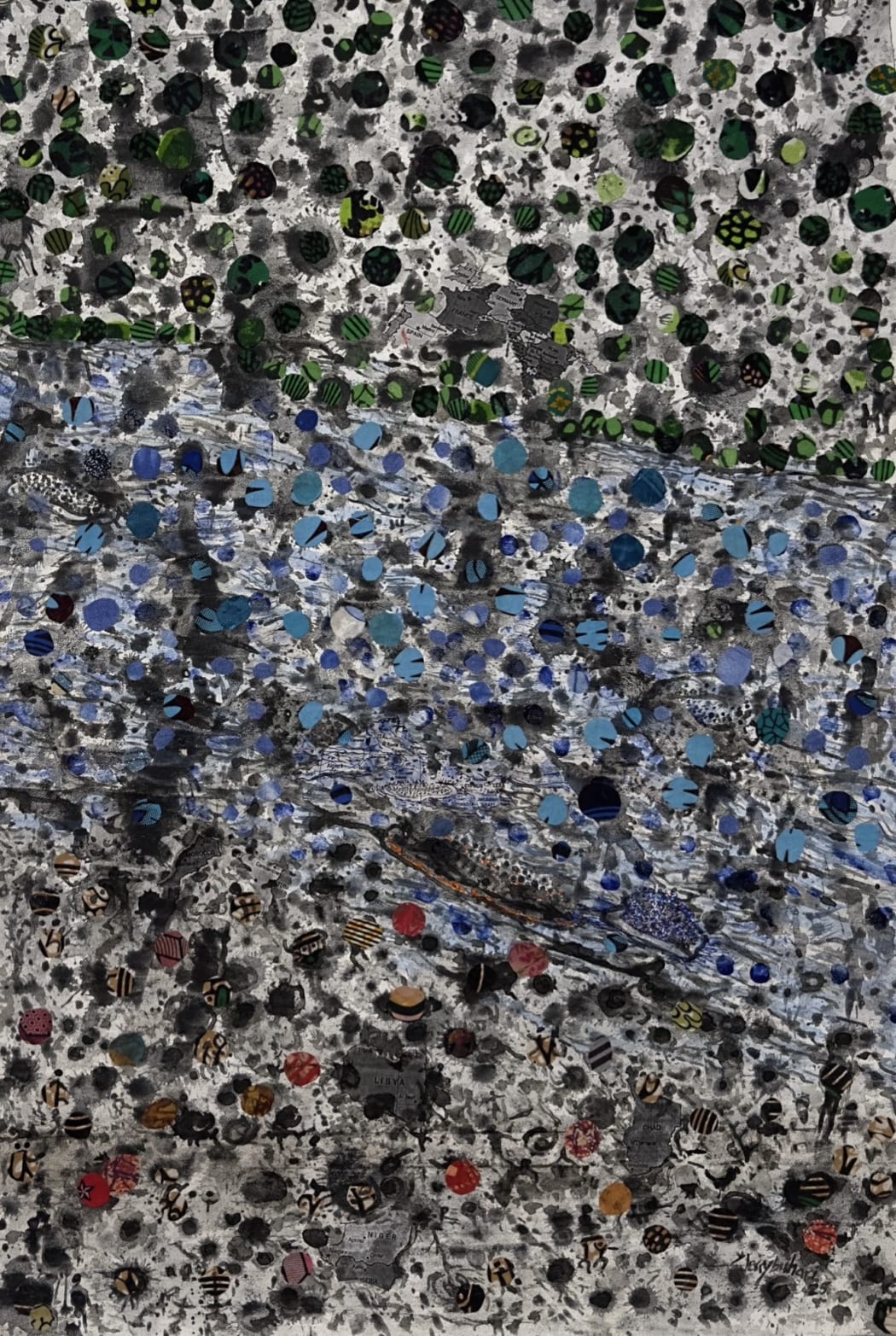 Jerry Buhari, ‘Dark journey across the Mediterranean Sea, Jápa series,’ 2024
Jerry Buhari, ‘Dark journey across the Mediterranean Sea, Jápa series,’ 2024 -
 Abdulrazaq Awofeso, ‘Untitled’, Akube Remix Series, 2024
Abdulrazaq Awofeso, ‘Untitled’, Akube Remix Series, 2024In Conversation: Abdulrazaq Awofeso and Rose Davey
Abdulrazaq Awofeso: ‘Akube Remix’ // October 31 - December 20Abdulrazaq Awofeso in conversation with artist and curator, Rose Davey, during Akube Remix at Ed Cross Gallery, London, December 2024
-
 Abe Odedina, Madame Lasirenn, 2024
Abe Odedina, Madame Lasirenn, 2024In Conversation: Abe Odedina and Lara Pawson
Abe Odedina at 1-54 Contemporary African Art Fair London, 2024I like to leave in space in the painting for the observer because, for me, a painting can only be understood as something between my expression and your interpretation. I think that's important. Also, it's a static thing on the wall and somehow with the concreteness and the diagrammatic nature of the painting, it's important for me to allow the viewer to inhabit the painting themselves. I think it really makes the work bigger, in my opinion. If a work can be equally charming and disturbing, I'm thrilled.
-
 Ermias Ekube, Examining Egg, 2020
Ermias Ekube, Examining Egg, 2020Ed Cross on Ermias Ekube
"Painter, thinker, poet, educator"Ermias Ekube’s story is a tale of our times. An artist whose life has been shaped by political upheaval and military conflicts, his practice both responds to and is affected by and the brutalities of global history, yet is not defined by it. His is a story that is still very much being written.
-
 Ermias Ekube, Memories are we are memories #26, 2023
Ermias Ekube, Memories are we are memories #26, 2023Memories are we are memories, by Precious Adesina
Ermias Ekube, Memories are we are memories // June 6 - 29When painter Ermias Ekube visited his family in Eritrea’s capital, Asmara, in 1997, he was unaware of the fact he wouldn’t be able to return to his home in Ethiopia for almost two decades. Ermias had been living in Addis Ababa, when a border conflict between Ethiopia and Eritrea left many unable to move or communicate across the two countries. “I was stuck,” the 54-year-old says on a video call. “I had left all my belongings in Addis, including my paintings, and I didn’t know my friends’s whereabouts.”
-
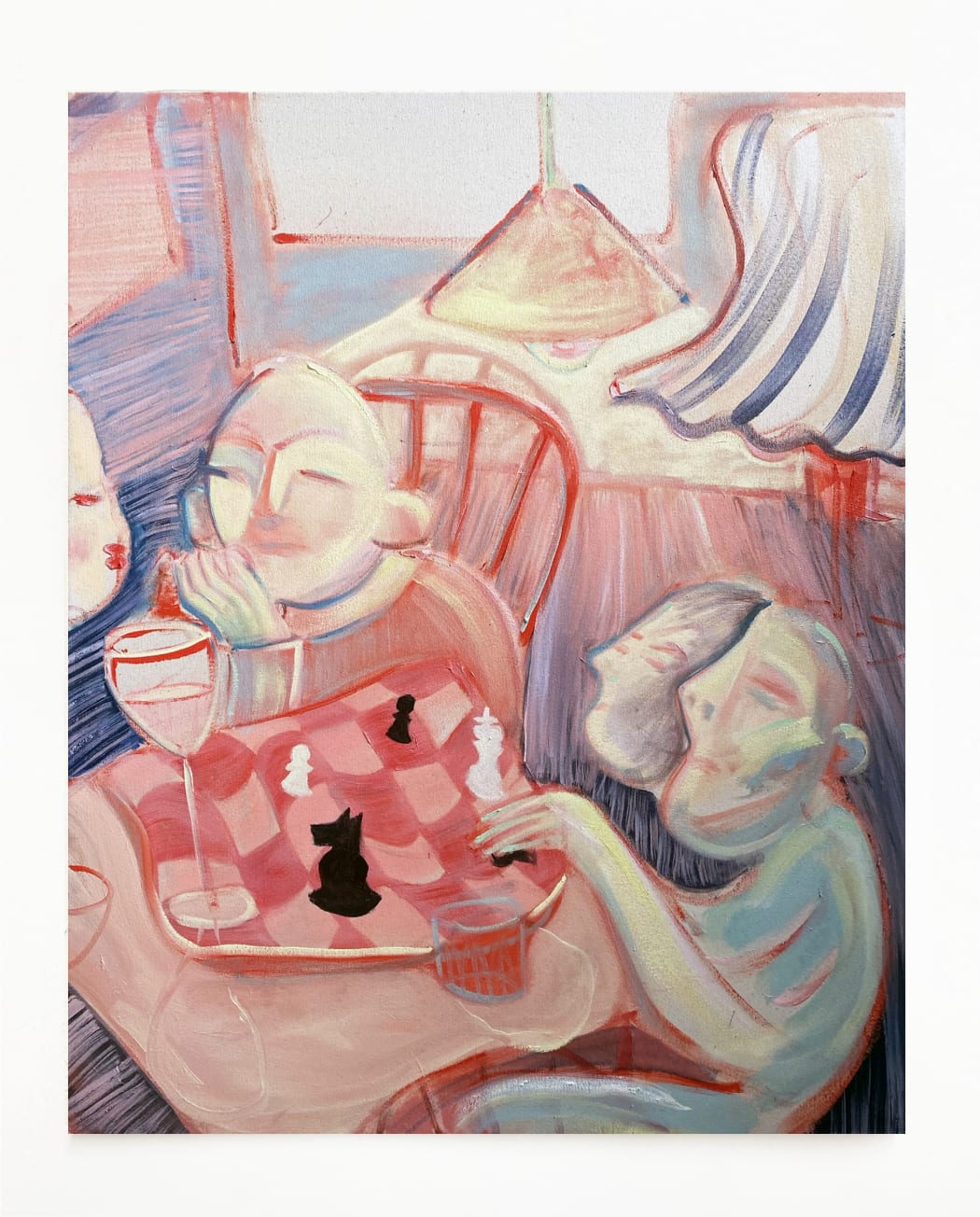
-
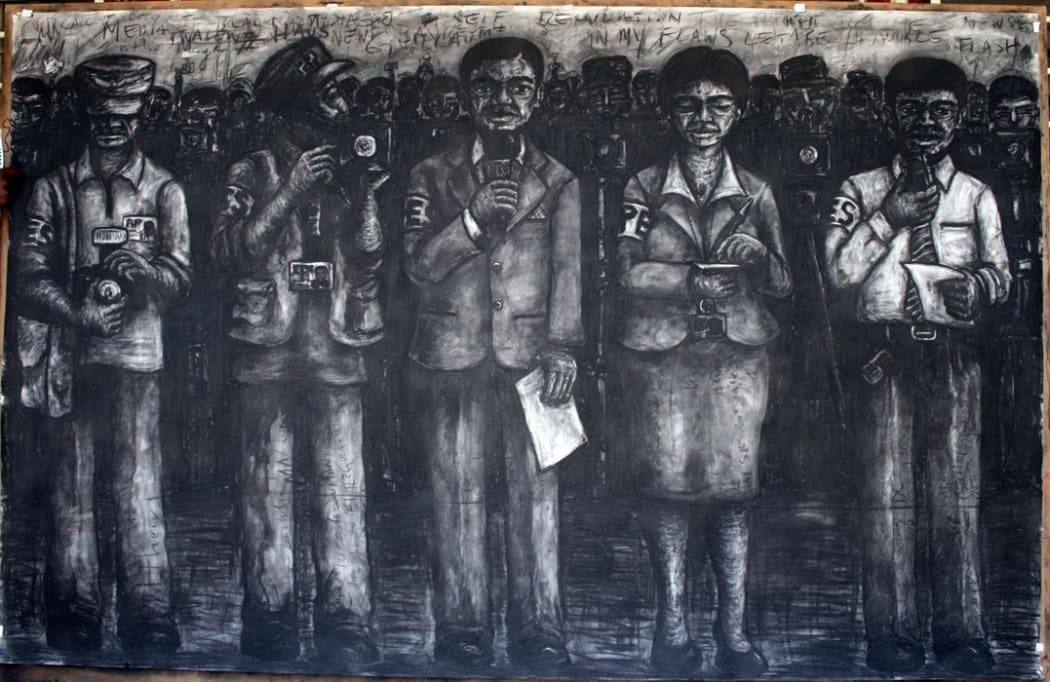 Peterson Kamwathi, 'Untitled (The Media), Sitting Allowance', 2009
Peterson Kamwathi, 'Untitled (The Media), Sitting Allowance', 200915
Ed Cross Celebrates 15 YearsIt could be said that my journey towards being a gallerist started in 1988 in Kenya, where this latter day European adventurer ended up on the shores of the Indian Ocean with my then partner and her children in a palm-thatched Swahili dwelling that had been the home of an artist friend.
-
 Abe Odedina, 'A large inheritance', 2023
Abe Odedina, 'A large inheritance', 2023In Conversation: Abe Odedina and Katherine Finerty
Ed Cross at 19 Garrett StreetMy work isn't about what we've lost or gained; it's about the fact that change never ends. I find that very positive and optimistic because it means you don't reach conclusions too quickly about where things are going or what we are going to discover.
-
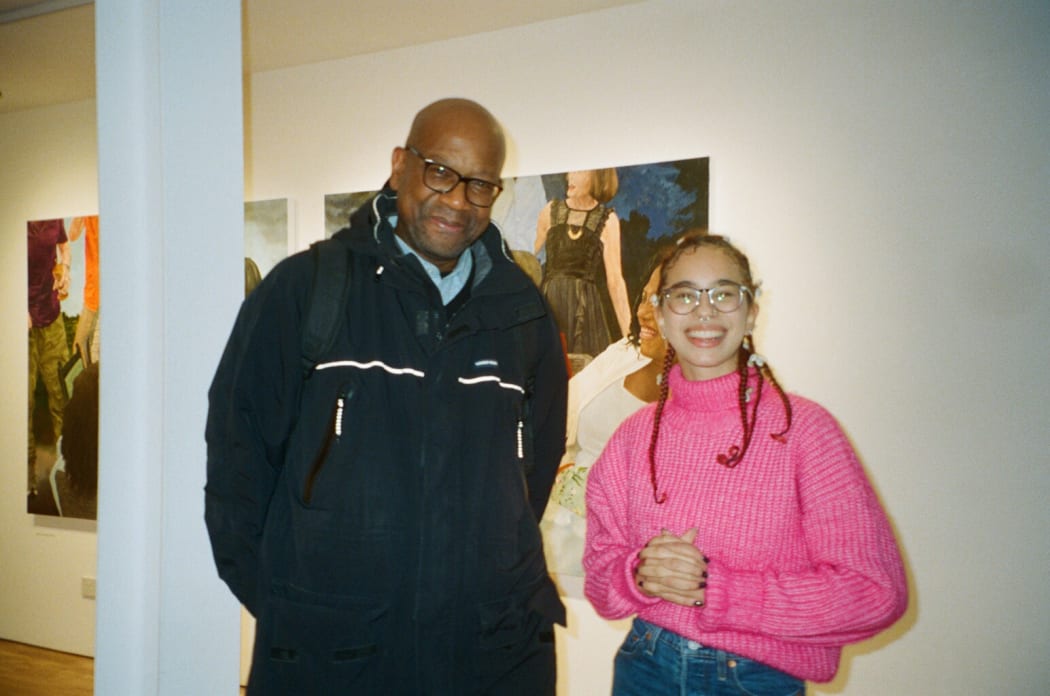 Eugene Palmer with Skye Weston at Ed Cross Gallery, 2022
Eugene Palmer with Skye Weston at Ed Cross Gallery, 2022Standing Still: Interview with Eugene Palmer
Skye Weston and Eugene Palmer discuss his practice and recent workIn his latest exhibition Standing Still, now at Wolverhampton Art Gallery after launching at Ed Cross, Eugene Palmer (b.1955) paints two recent family events. These images of his family – modern, blended and extended – can be reproduced “a thousand times all over the UK”, sociologically substantiating the changing structure of the family in the 21st century, dipping into multiple narratives about identity. -
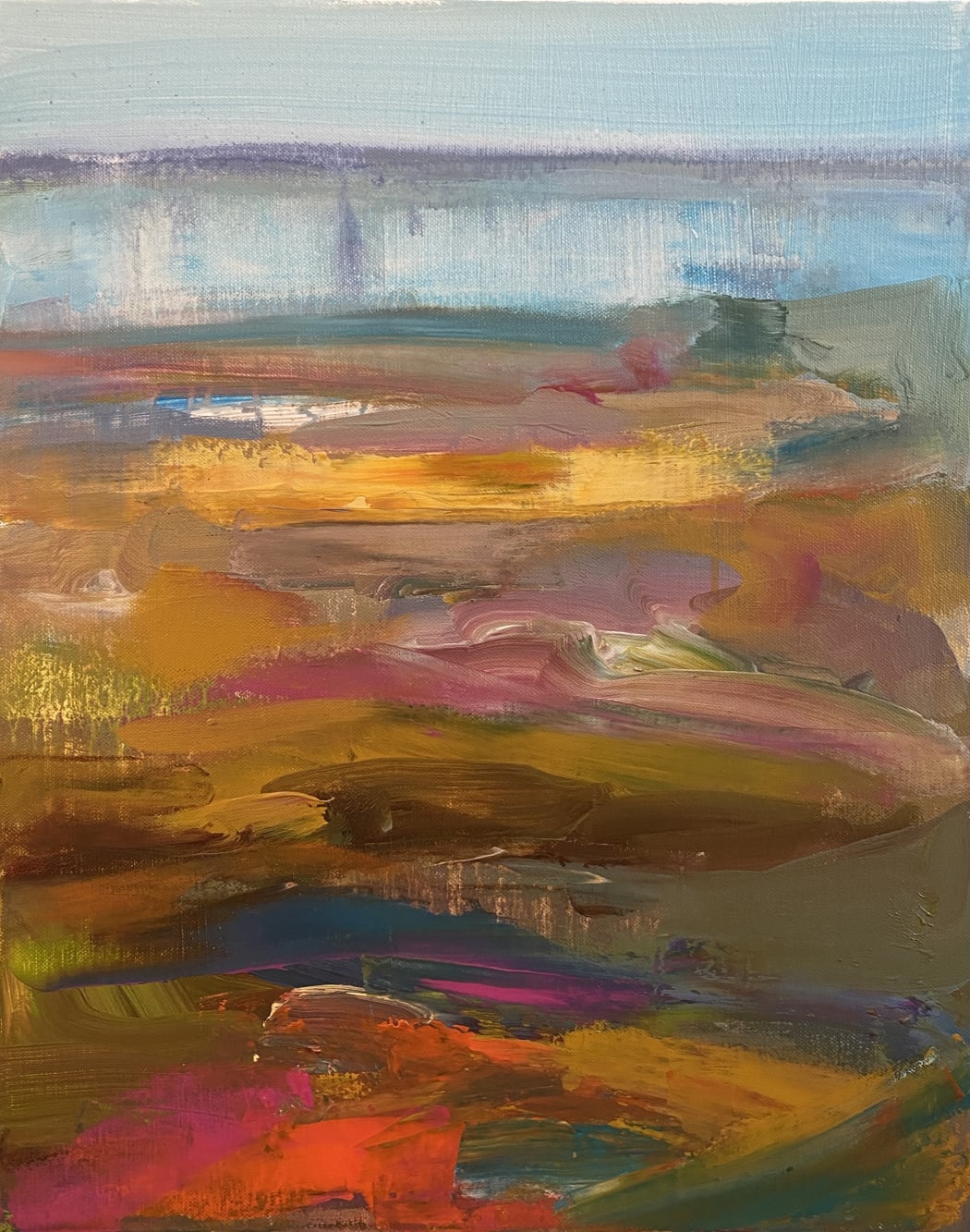 Ermias Ekube, 'Foreign Lands #10', 2022
Ermias Ekube, 'Foreign Lands #10', 2022Foreign Lands: A Dialogue
Ermias Ekube and Eric Pina in conversation, moderated and translated by Hanou Amendah -
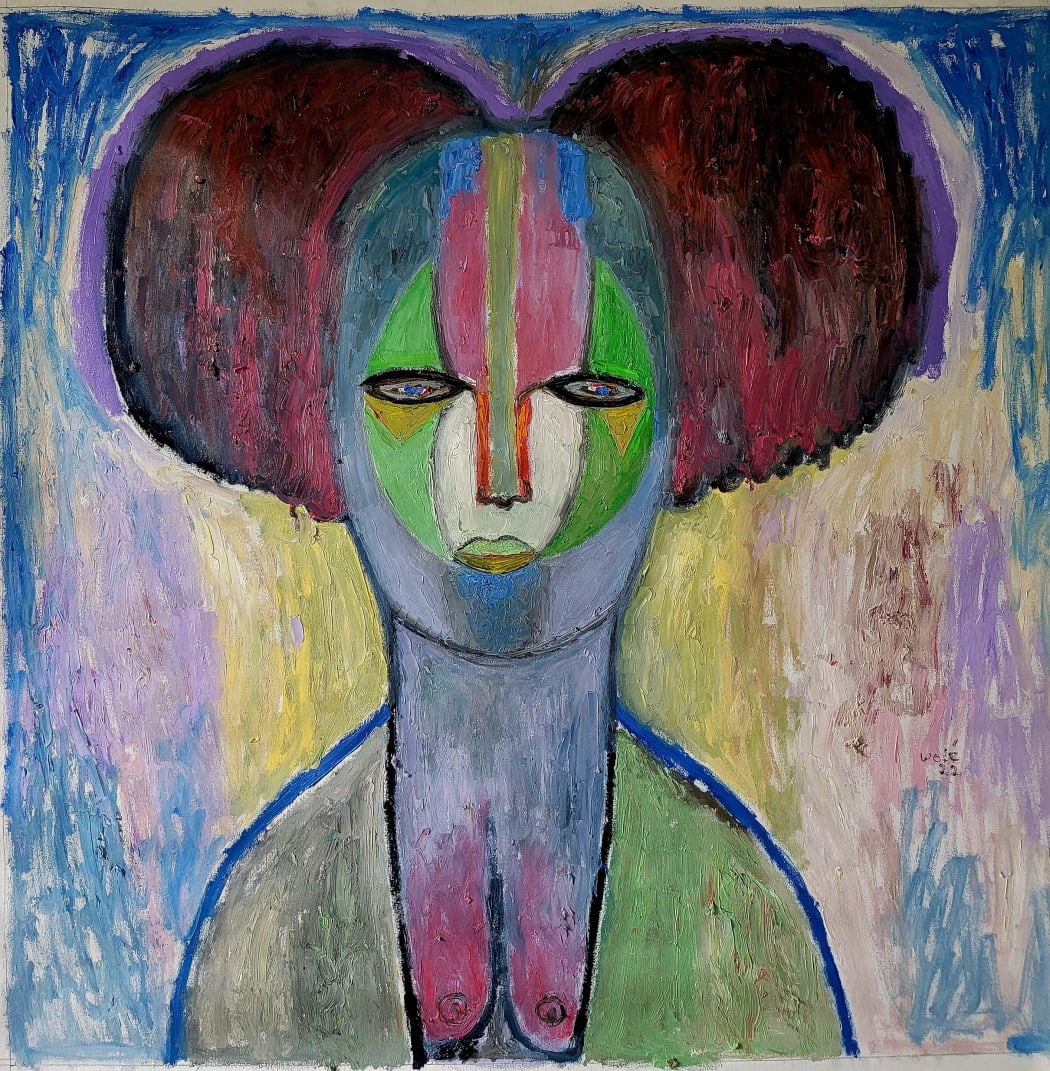 Wole Lagunju, 'Woman II', 2022.
Wole Lagunju, 'Woman II', 2022.Cut From the Same Cloth
Ana Beatriz Almeida on Wole Lagunju's 'Cut From The Same Cloth'In Cut from the Same Cloth, Wole Lagunju extends his long-term interrogation of the concept of Iyami. Described by the artist as the basis of Yoruba culture and a primary theme of his work, Iyami literally translates as “my mother” and refers to womanhood – a kind of essential femininity – more broadly. Drawing on a pre-colonial social structure and often symbolically associated with birds, Iyami figures femininity as institution, unifying the collective by evoking the origins of life on earth. -
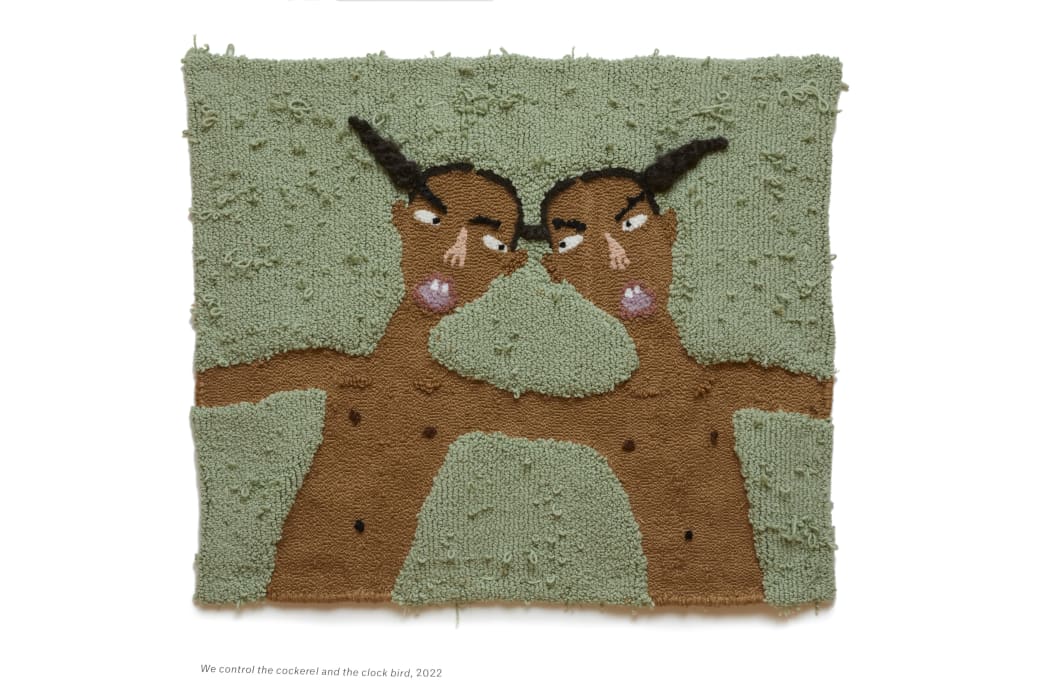 Anya Paintsil, 'The teeth and the tongue', 2022. Photo credit Rocio Chacon.
Anya Paintsil, 'The teeth and the tongue', 2022. Photo credit Rocio Chacon.Hiraeth
Charlotte Jansen on Anya Paintsil's 'We Are All Made of You'"Hiraeth. The word, Anya Paintsil tells me, “can’t be translated directly into English – but is kind of a nostalgia, or homesickness for a time
or place you cannot go back to”. Hiraeth refers specifically to Wales – but it pinpoints a feeling I have experienced as a diasporic person, uprooted and replanted elsewhere." -
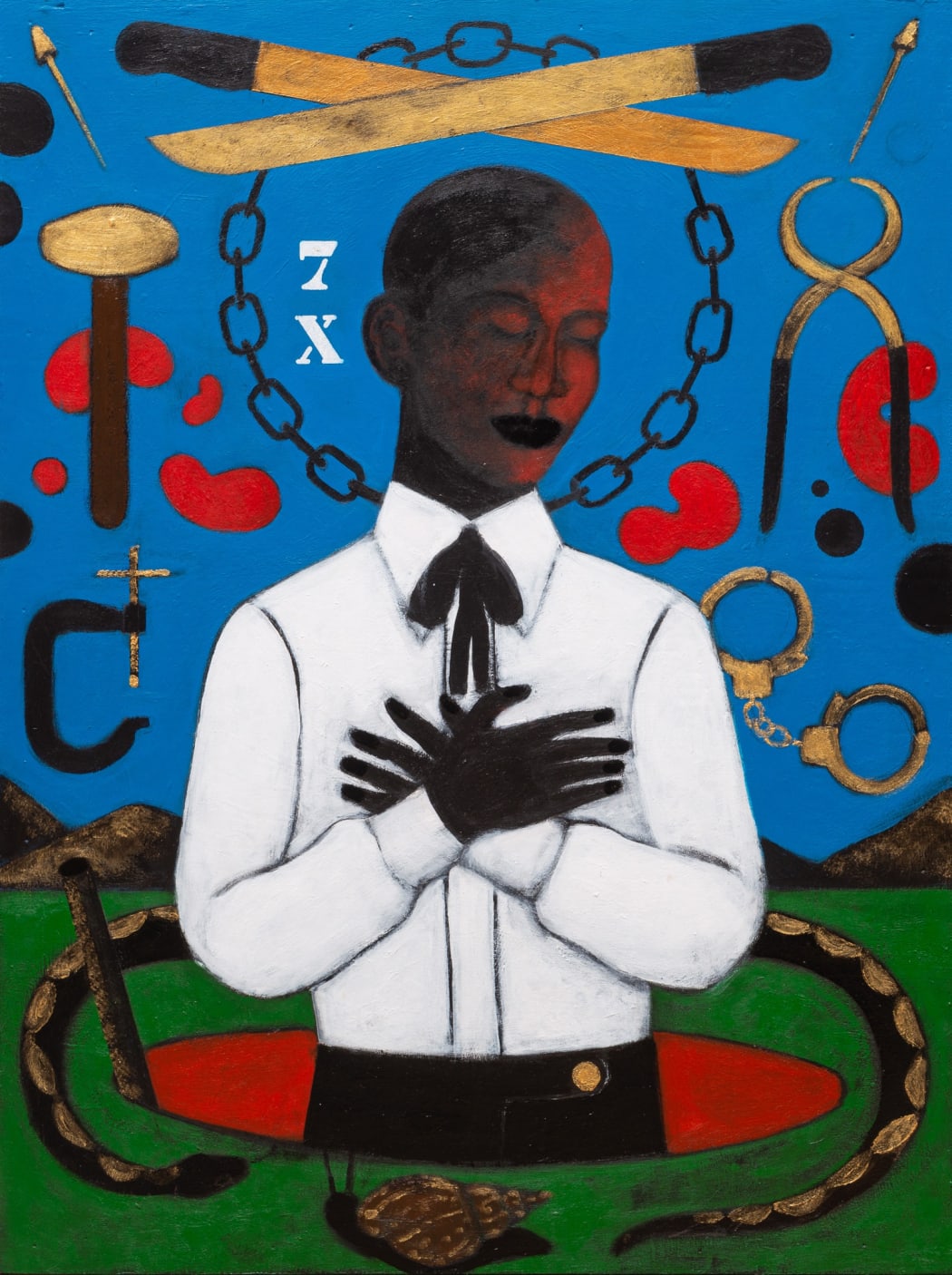 Abe Odedina, Cutting edge, 2021
Abe Odedina, Cutting edge, 2021Cutting Edge, from Cutting Edge at 20 Clerkenwell Green
Abe Odedina, Conversation Piece #12Metaphor has long acknowledged the power of the cut in conveying precision, ruthlessness – in English, to cut a fine figure, deliver a cutting glance, cut to the chase, cut someone down to size or cut one’s losses, are all idioms loaded with a blade’s implicit finality. When a director shouts CUT! she stops a scene in its tracks, and when we pronounce something to be on the outer reaches of culture’s avant garde, we call it cutting edge. In Odedina’s hands, that title is wielded with something of a sideways smile.
-
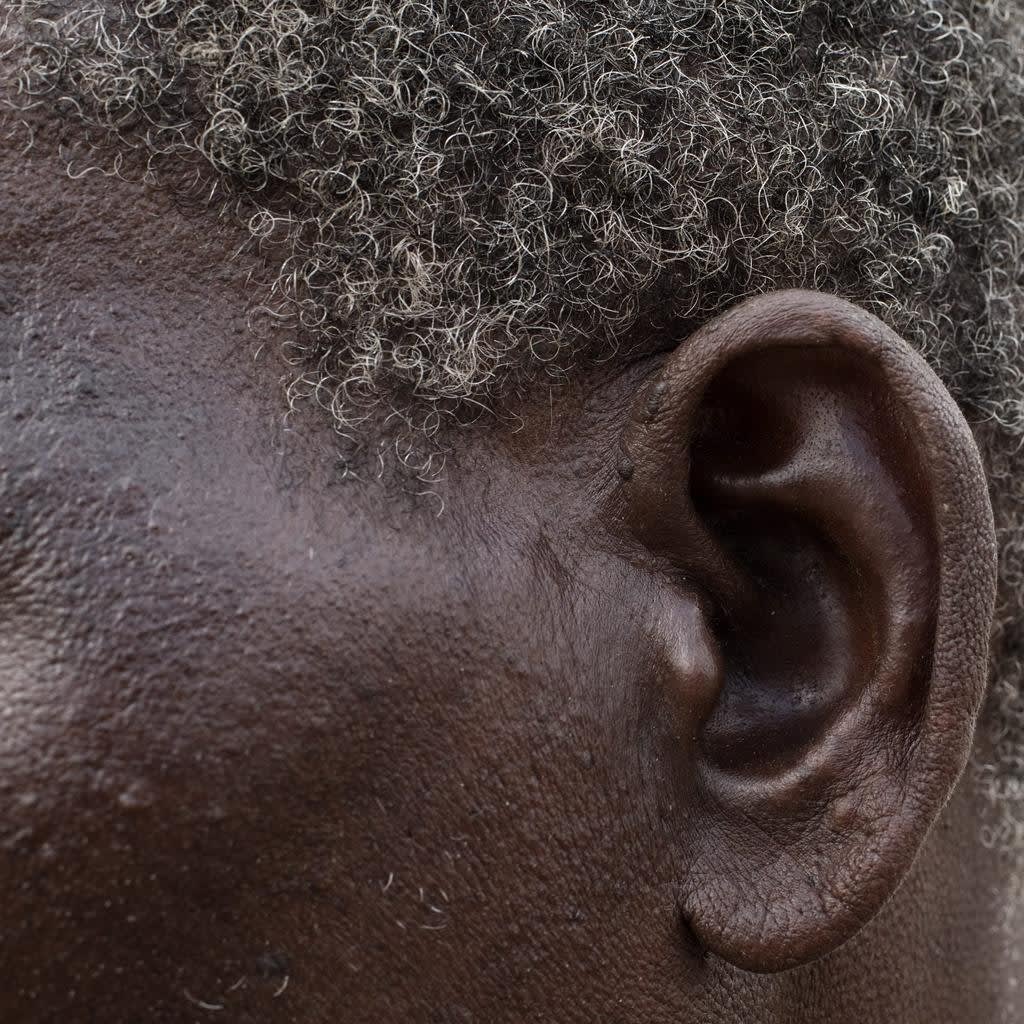 Mário Macilau, Ear (Untitled 9) from series Things Fall Apart, 2021. Photographic print.
Mário Macilau, Ear (Untitled 9) from series Things Fall Apart, 2021. Photographic print.Ear, from series Things Fall Apart
Mário Macilau, Conversation Piece #11There’s something unmistakable about a Mário Macilau image – perhaps a detail that has drawn his interest, or the openness with which he approaches it. Macilau’s knack for snatching moments and forging connections with his subjects (often, he is working on a given series for months at a time) has served him well since he started making photographs as a teenager in Maputo, Mozambique, 20 years ago. Today, he’s in high demand – but as his new series demonstrates, the gaps between jobs can be just as fruitful as any assignment.
-
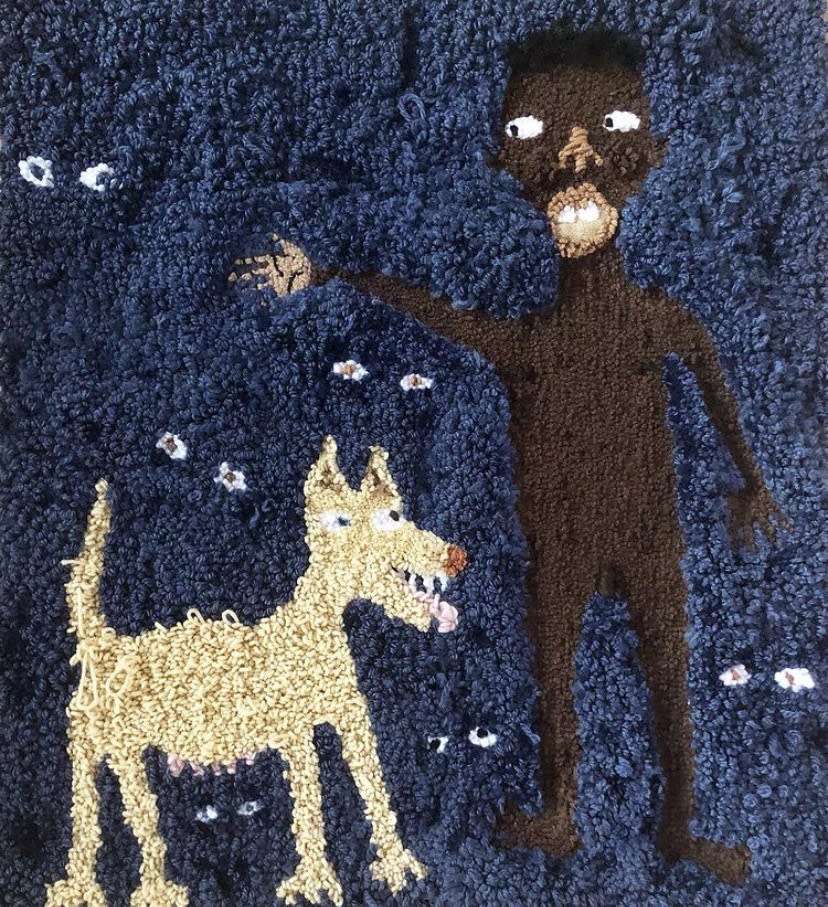 Anya Paintsil, Beware the woman dog and her babies, 2020
Anya Paintsil, Beware the woman dog and her babies, 2020Q & A: Anya Paintsil and Katy Hessel
Conversation Piece #10Katy Hessel of The Great Women Artists speaks to Anya Paintsil about fibre, feminist art, family and much more in this very special edition of ECFA's Conversation Piece.
-
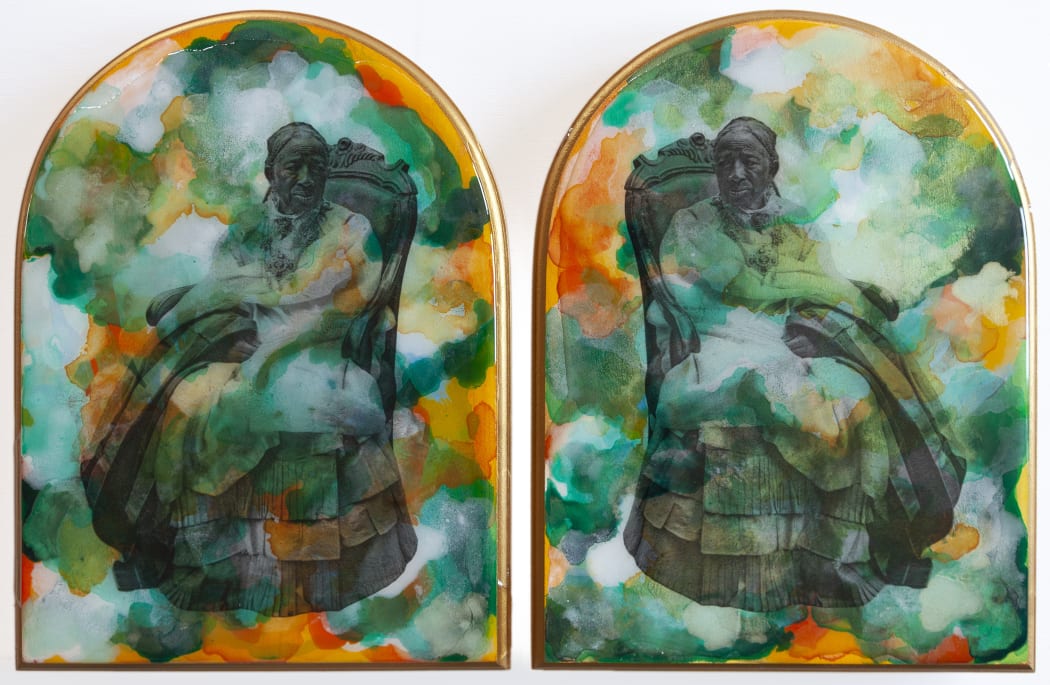 Shiraz Bayjoo, 'Nu Ban Ansyen' (diptych), 2021. Acrylic and resin on wood.
Shiraz Bayjoo, 'Nu Ban Ansyen' (diptych), 2021. Acrylic and resin on wood.Archival Disruptions for a Poetics of Futurity by Ilaria Conti
Shiraz Bayjoo: Apart Bez, Tu Korek at 20 Clerkenwell GreenShiraz Bayjoo deconstructs the material and visual languages of coloniality to articulate new critical strategies for decolonial sovereignty in the present. The artist’s research-based practice, rooted in his Mauritian heritage, addresses the settlers’ endeavours that have marked the Indian Ocean by pursuing a transversal understanding of the region as a whole. His work investigates the implications of such interconnectedness, in resonance with Édouard Glissant’s notion of ‘poetics of relation’ and Patrick Chamoiseau’s interpretation of creolité.
-
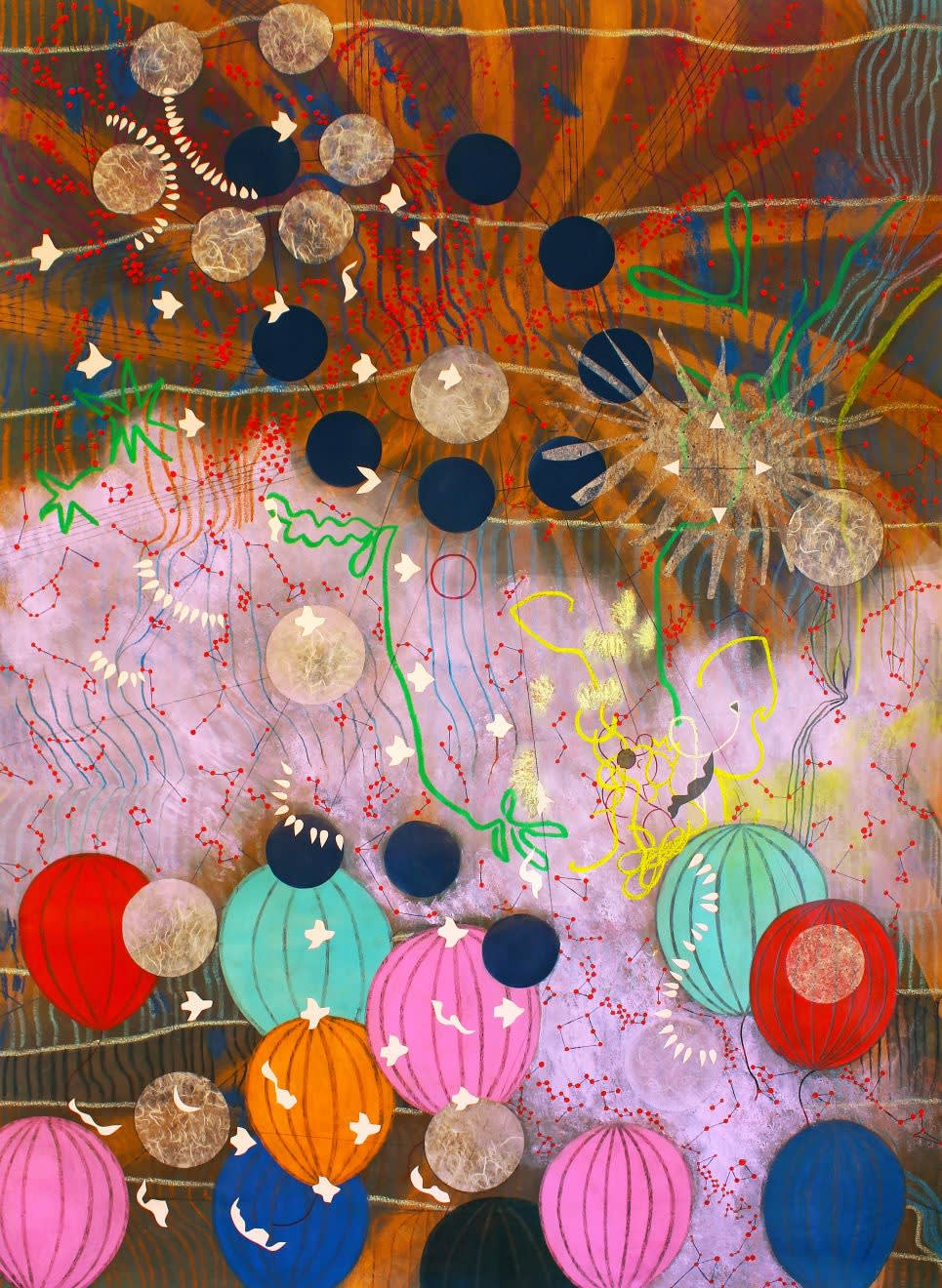 Tiffanie Delune, No one dance like we do, 2021
Tiffanie Delune, No one dance like we do, 2021Tiffanie Delune and Enuma Okoro
Conversation Piece LiveOn May 28th, ECFA's Conversation Piece took to the airwaves in a live stream with Tiffanie Delune and Enuma Okoro. Here, we've collected our highlights from their conversation.
-
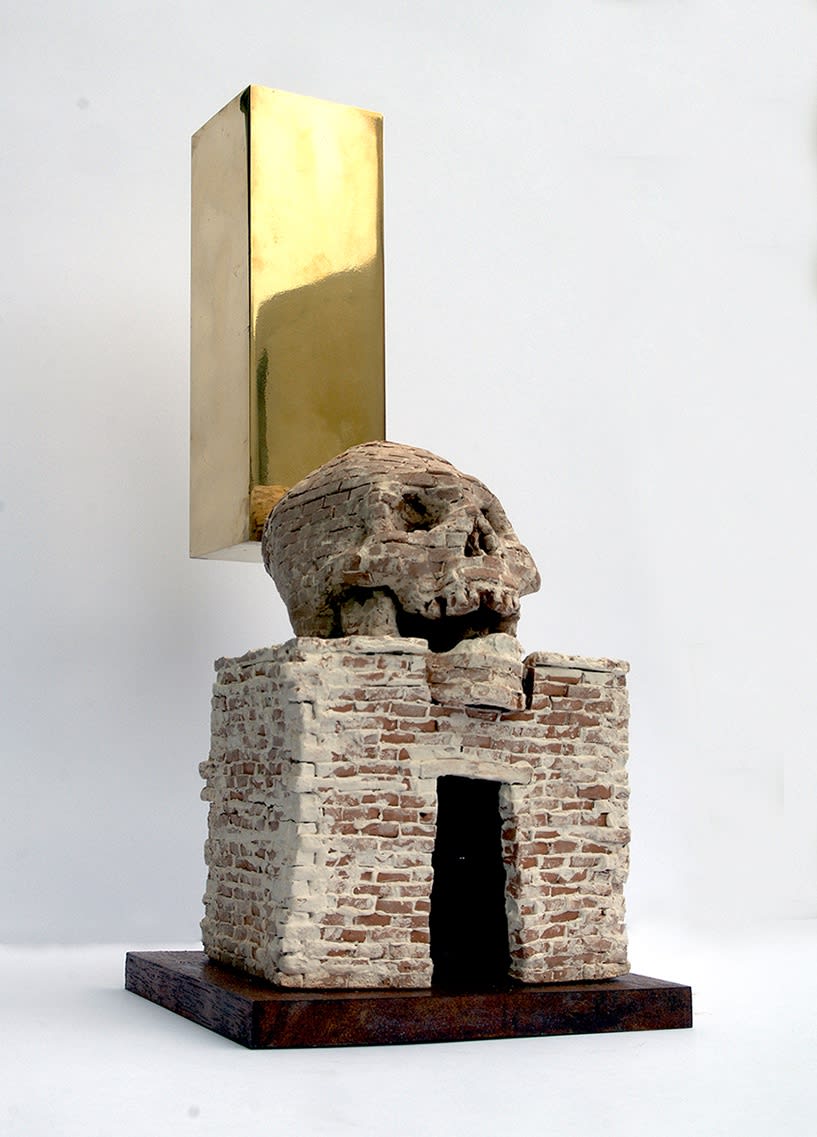 Cesar Cornejo, Trepanation 2, 2016
Cesar Cornejo, Trepanation 2, 2016Trepanations
Cesar Cornejo, Conversation Piece #8'In Cornejo’s work, meaning and material, source and symbolism, cleave more tightly than any cement could hope to.'
-
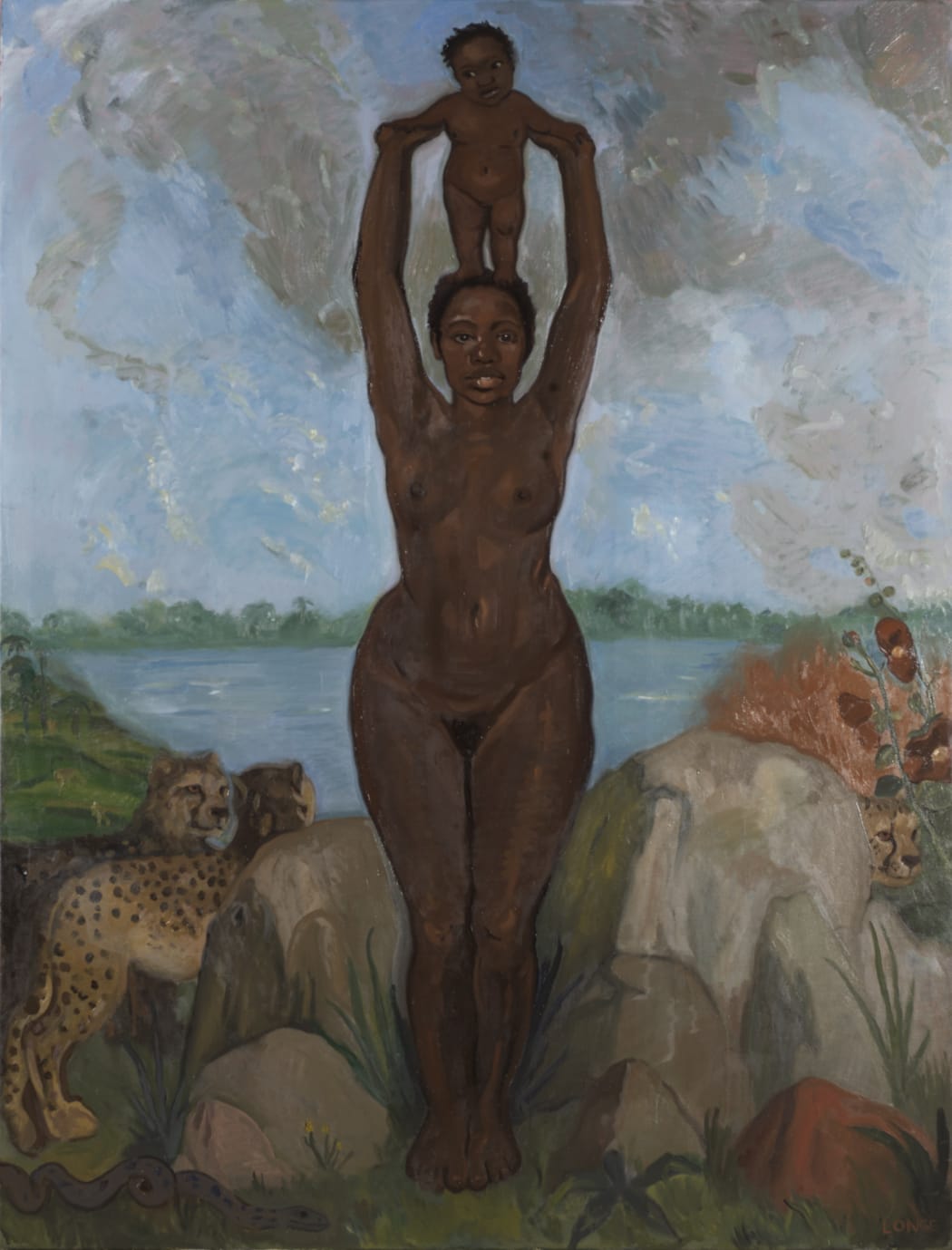 Sahara Longe, Mami Wata, 2021.
Sahara Longe, Mami Wata, 2021.Mami Wata
Sahara Longe, Conversation Piece #7'Everyone has a different story – my mum thinks of Mami Wata as albino with long blonde hair, and lots of people think she has a fish's tail… She represents money, healing – she does loads of different things,’ says Sahara Longe. ‘But I like the story of fertility. If a woman couldn't have children, she would go and pray to Mami Wata who would give her a baby.’
-
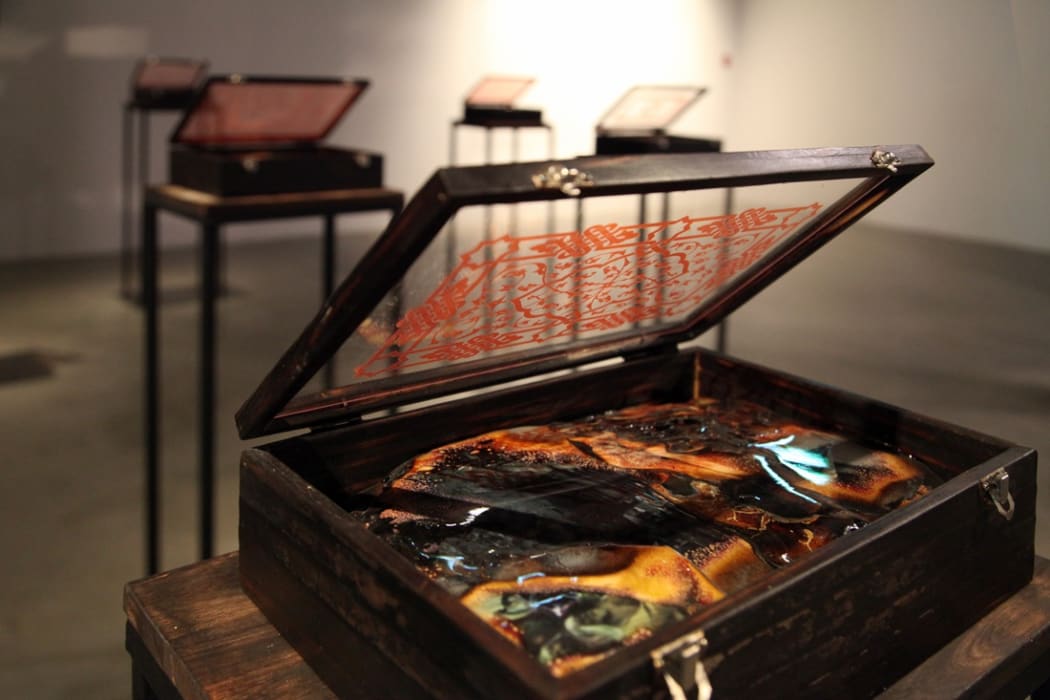 Rushdi Anwar, We have found in the ashes what we have lost in the fire, 2018
Rushdi Anwar, We have found in the ashes what we have lost in the fire, 2018We have found in the ashes what we have lost in the fire
Rushdi Anwar, Conversation Piece #6A small town, north-east of Mosul, Bashiqa was once known for its onion pickles and olive trees. With a population spanning Kurdish Yazidi, Shabak, Assyrian and Arab Muslim, there are records of a diverse community at the site from the 13th century; undoubtedly, Bashiqa’s history stretches back further still, and it remained a tourist destination for Iraqis into the 21st century.
-
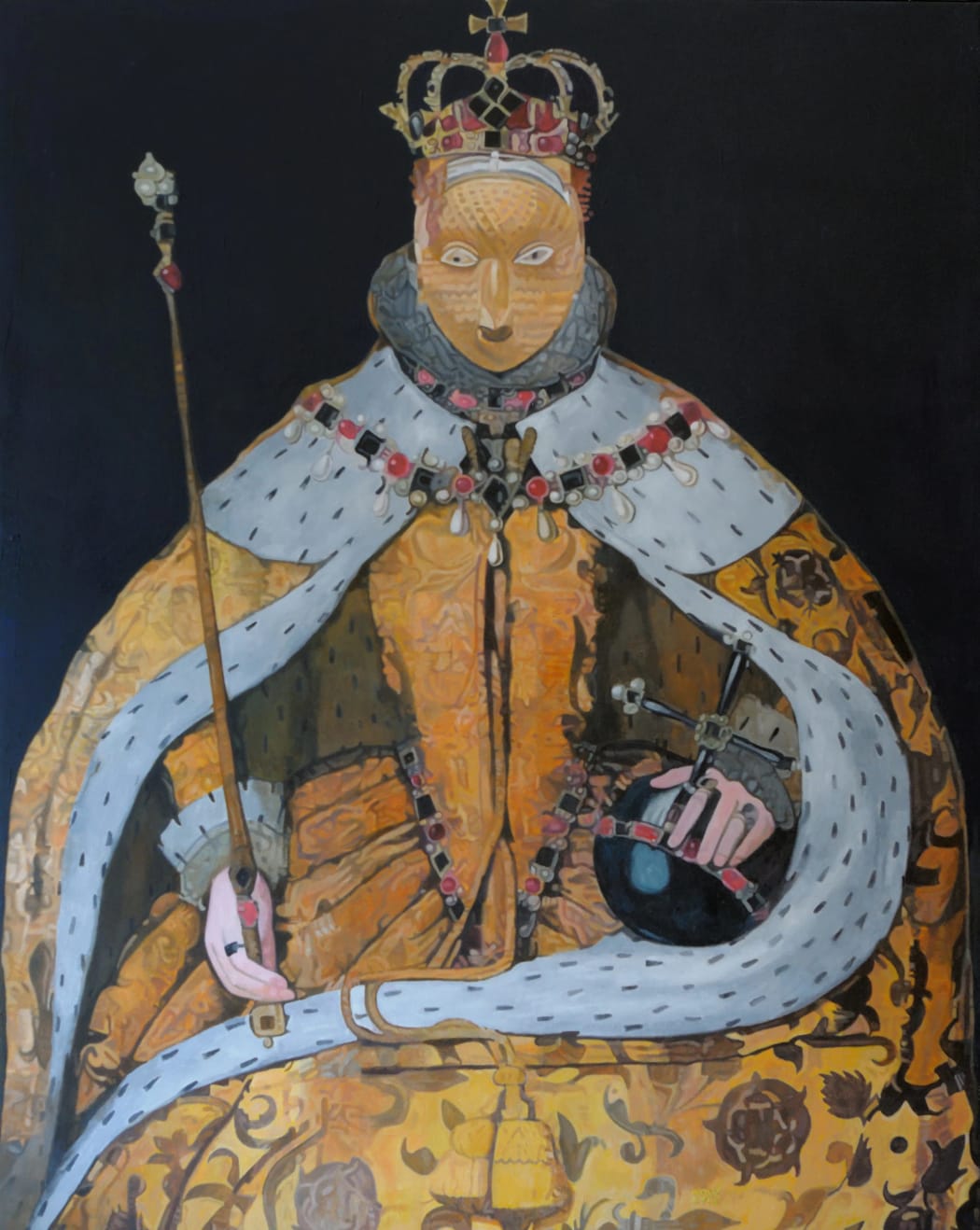 Wole Lagunju, Gelede II - Satire and Parody, 2013
Wole Lagunju, Gelede II - Satire and Parody, 2013Wole Lagunju
Gelede PortraitsOne might say that Yoruba is among the most powerful answers to the legacies of European empire. As the history of empire coalesced the world around a few European languages and the Judeo Christian religions, the potency and charisma of Yoruba beliefs, hermeneutics, aesthetics and theology has sustained its hold upon people across the African diaspora. And continues to grow. Wole Languju’s striking portraits are a testimony to this.
-
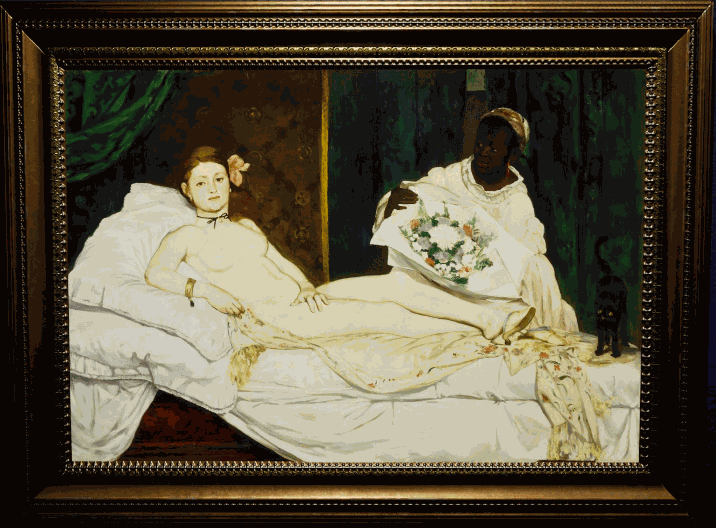 Édouard Manet, Olympia, 1863
Édouard Manet, Olympia, 1863The Woman in the Background: Odedina and Manet at VOMA
By Abe OdedinaThere are two women in Edouard Manet's infamous Olympia. We know a lot about one; reclining, pert and centre stage, is Victorine Meurent. As for the second woman, a servant standing behind Meurent/Olympia to present her with flowers, we know only her first name: Laure. Laure is black.
-
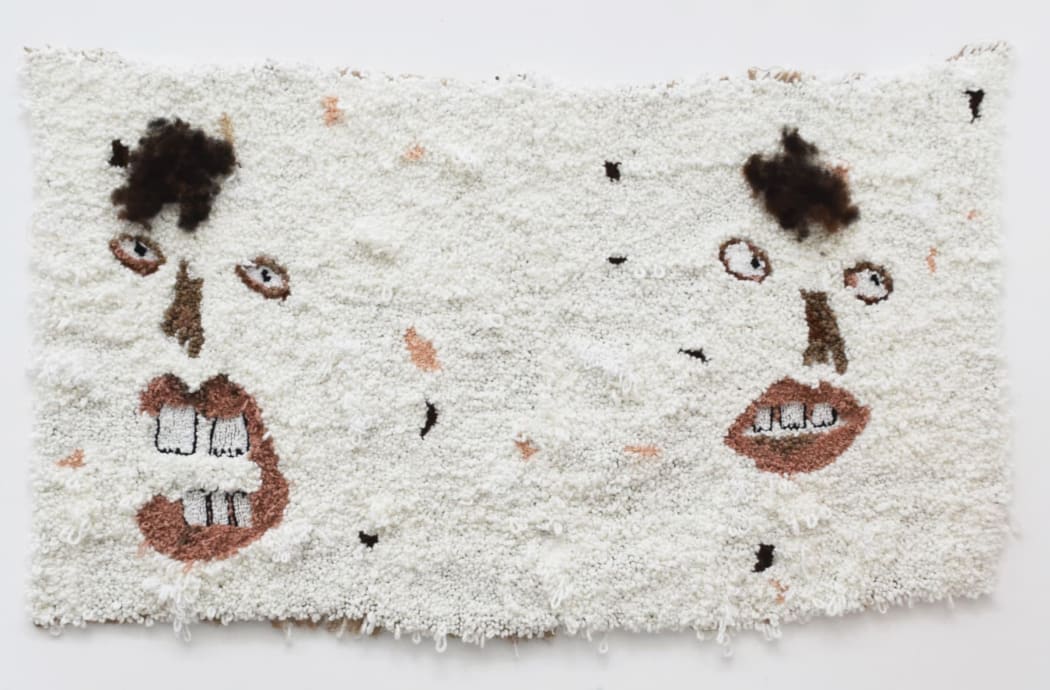 Ni yn unig, Anya Paintsil, 2020
Ni yn unig, Anya Paintsil, 2020Ni yn unig
Anya Paintsil, Conversation Piece #5“Ni yn unig” – only us. Titled in Welsh, Anya Paintsil’s first language, Ni yn unig is based on a childhood photograph. The artist and her sister, aged circa seven and five respectively, have been rendered in textiles: not only how they were (“She was quiet; I was loud. I was such an angry kid, and she was this duckling behind me,” says Paintsil), but how they felt themselves to be.
-
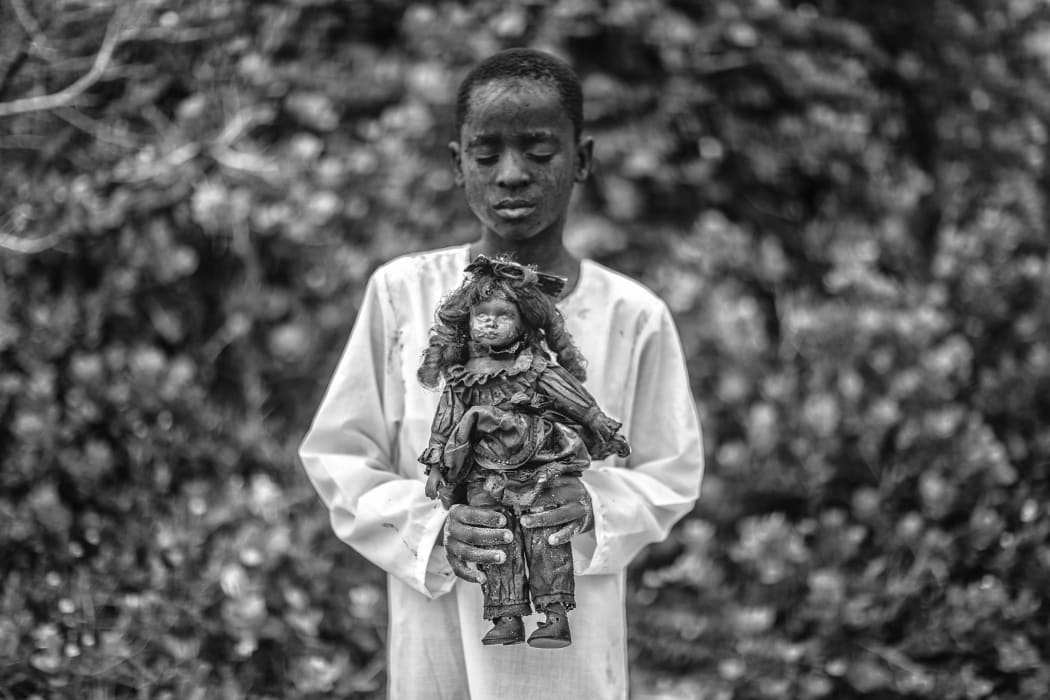 A boy with a toy, Mário Macilau, 2018
A boy with a toy, Mário Macilau, 2018A boy with a toy
Mário Macilau, 2018A boy stands centered in the frame. The eyes of his lightly painted face are closed. The foliage behind him, out of focus, situates him out of any identifiable place.
-
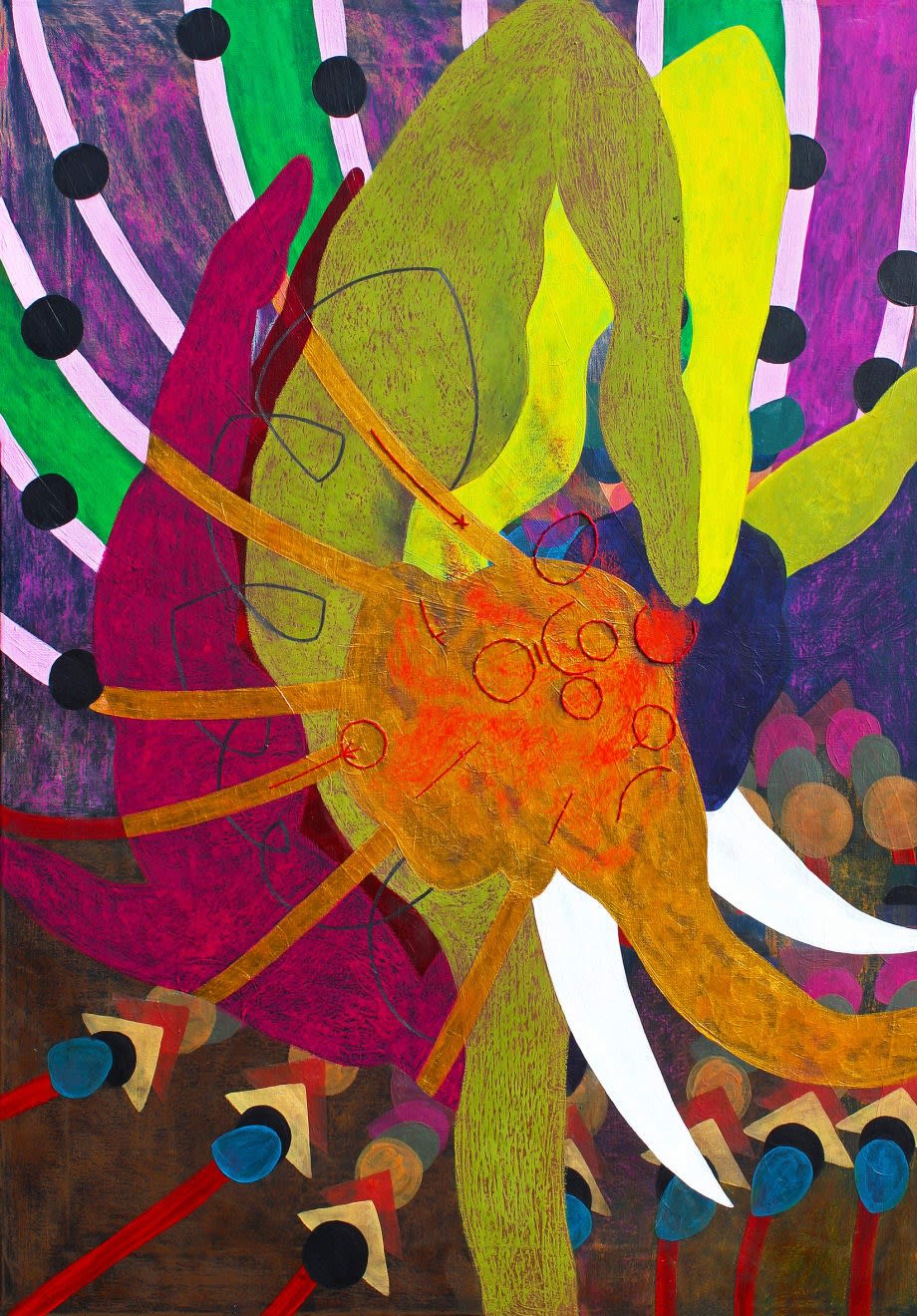 The Elephant Never Tires Carrying Its Tusks, Tiffanie Delune, 2020
The Elephant Never Tires Carrying Its Tusks, Tiffanie Delune, 2020The Elephant Never Tires Carrying Its Tusks
Tiffanie Delune, 2020Delune’s excitement in staging encounters – setting, medium, sentiment – is palpable. It’s contagious, too; how could anyone resist travel-by-painting in a world whose borders have never felt so stark?
-
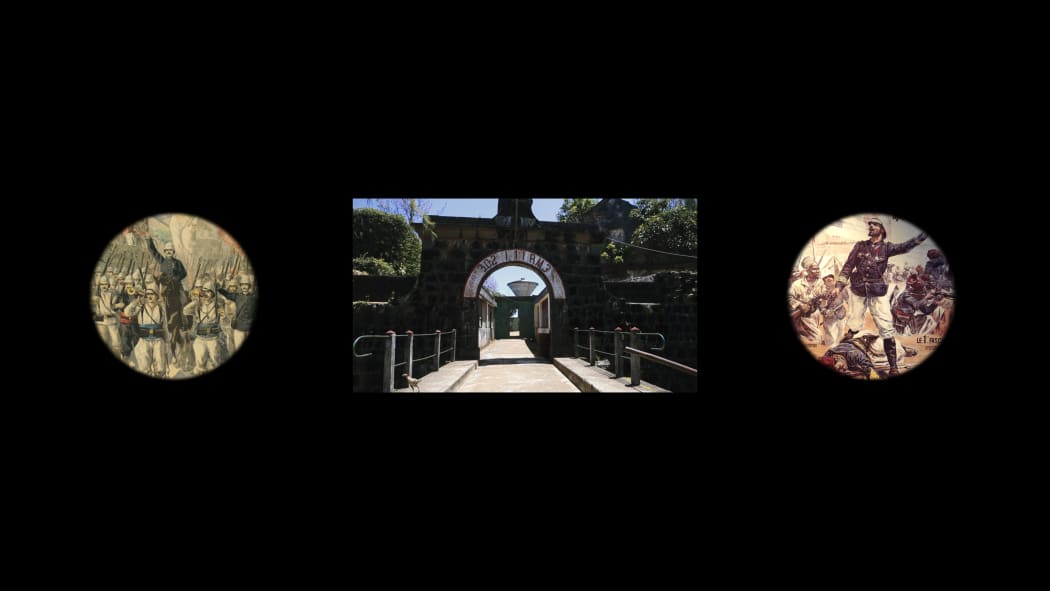 Screenshot: Searching for Libertalia, Shiraz Bayjoo. 2019.
Screenshot: Searching for Libertalia, Shiraz Bayjoo. 2019.Searching for Libertalia
Shiraz Bayjoo, 2019In Bayjoo’s Searching for Libertalia, ‘searching’ – with all its connotations of irresolution, journeying and betweenness – remains the operative word.
-
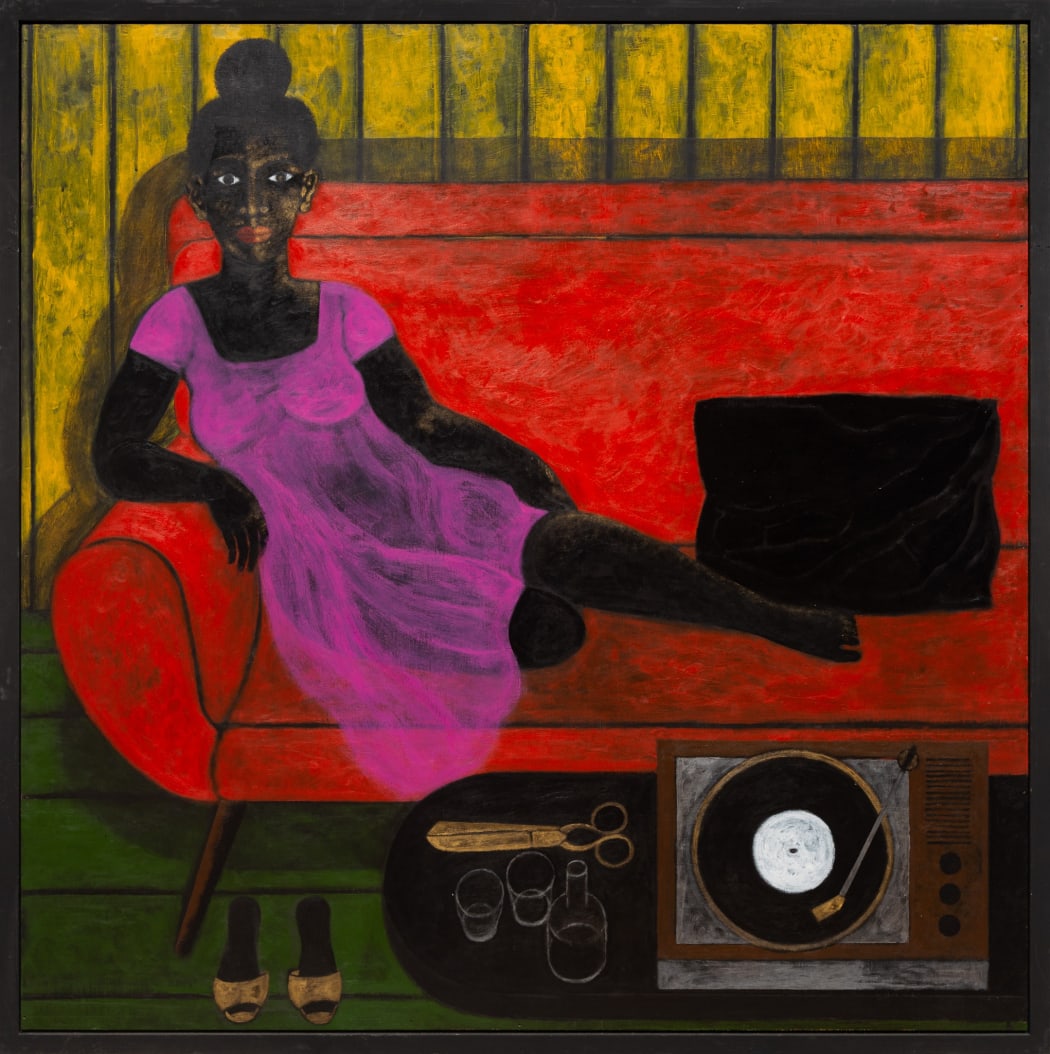 Abe Odedina, Warm Leatherette, 2019. Acrylic on plywood, 122 x122 cm
Abe Odedina, Warm Leatherette, 2019. Acrylic on plywood, 122 x122 cmWarm Leatherette
Abe OdedinaAbe Odedina’s Warm Leatherette is an uncanny tableau, familiar and alien at once. On its surface – and when it comes to painting, what else is there? – we observe a girl. Sofa. Table, LP. A bottle, and two glasses.